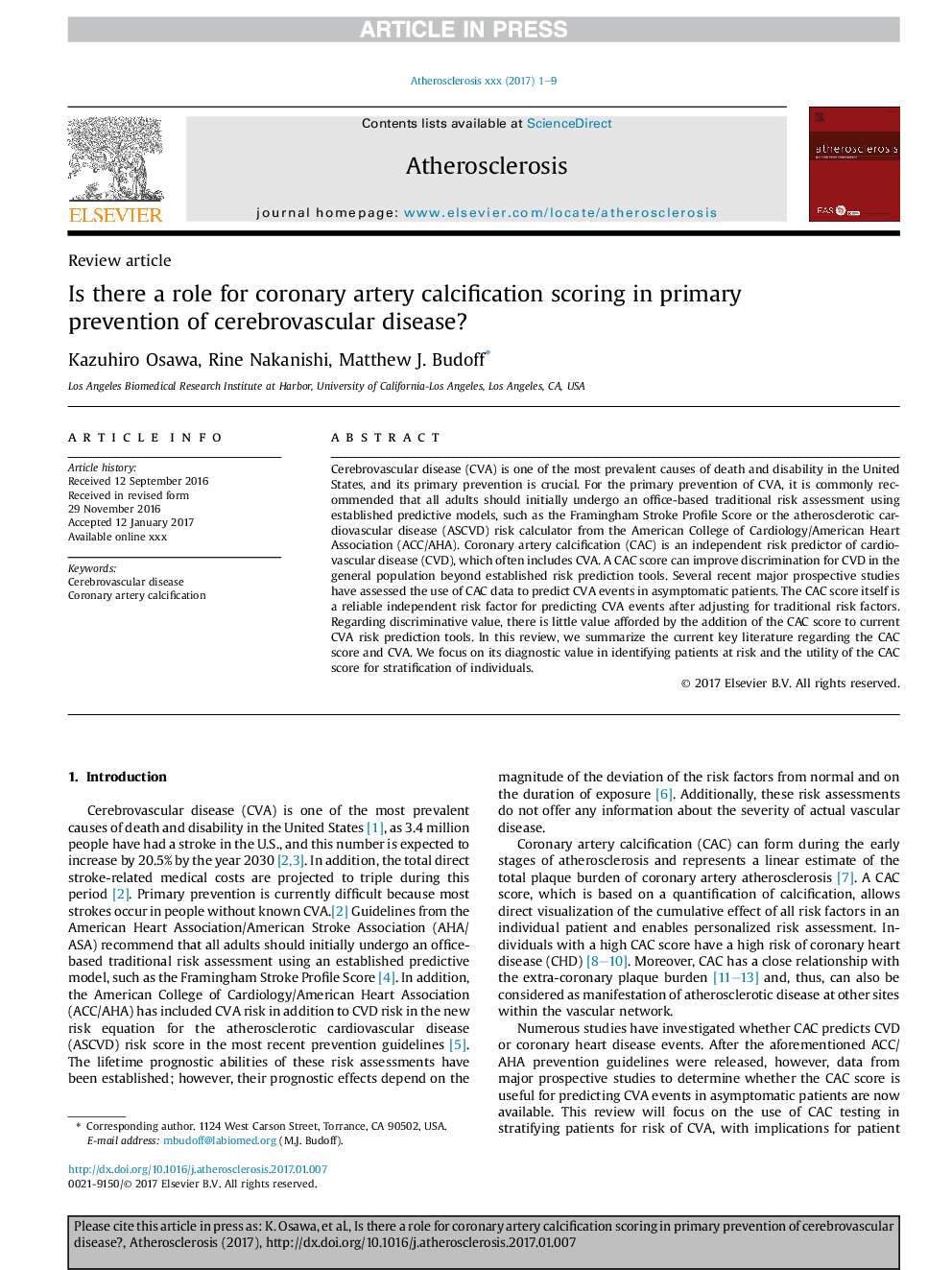| Article ID | Journal | Published Year | Pages | File Type |
|---|---|---|---|---|
| 5599645 | Atherosclerosis | 2017 | 9 Pages |
Abstract
Cerebrovascular disease (CVA) is one of the most prevalent causes of death and disability in the United States, and its primary prevention is crucial. For the primary prevention of CVA, it is commonly recommended that all adults should initially undergo an office-based traditional risk assessment using established predictive models, such as the Framingham Stroke Profile Score or the atherosclerotic cardiovascular disease (ASCVD) risk calculator from the American College of Cardiology/American Heart Association (ACC/AHA). Coronary artery calcification (CAC) is an independent risk predictor of cardiovascular disease (CVD), which often includes CVA. A CAC score can improve discrimination for CVD in the general population beyond established risk prediction tools. Several recent major prospective studies have assessed the use of CAC data to predict CVA events in asymptomatic patients. The CAC score itself is a reliable independent risk factor for predicting CVA events after adjusting for traditional risk factors. Regarding discriminative value, there is little value afforded by the addition of the CAC score to current CVA risk prediction tools. In this review, we summarize the current key literature regarding the CAC score and CVA. We focus on its diagnostic value in identifying patients at risk and the utility of the CAC score for stratification of individuals.
Related Topics
Health Sciences
Medicine and Dentistry
Cardiology and Cardiovascular Medicine
Authors
Kazuhiro Osawa, Rine Nakanishi, Matthew J. Budoff,
